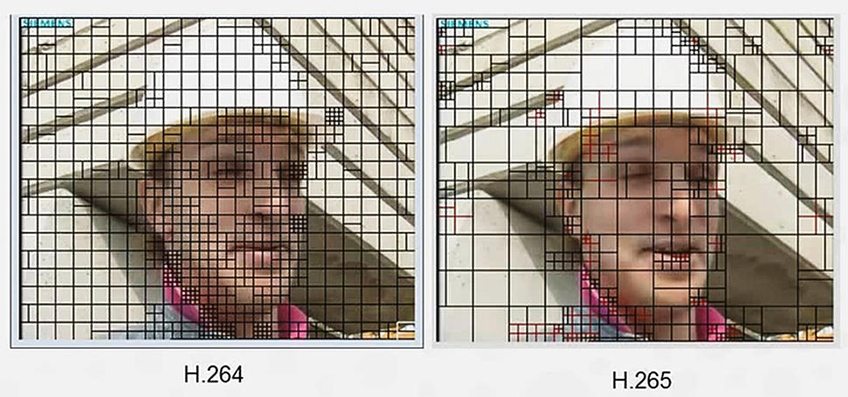Will HEVC reduce cost in the video business?
HEVC, new encoding technology that gives you double the quality of video picture at half the file size, is finally coming to a screen near you! It will give you hi-res video on slow internet connections, and full 4K UHD content on the speedier bandwidth spectrum.
My Adobe Creative Cloud is downloading a new batch of app updates as I’m writing this lines. And I couldn’t be more excited!
There are usual major updates and new features but the one that got me started is encode/decode support for HEVC (h.265). Now you’re thinking: ‘OK did this guy just got excited over a bunch of letters and numbers? Well it is sort of a big deal! This could be a major come through in the whole chicken and egg thing that HEVC codec is stuck for quite some time now. Now you’re thinking: ‘OK this guy completely lost it!’ Bare with me. If you happen to be a content creator, Netflix junkie or you just consume a fair amount of YouTube clips – bare with me! I’ll sum up this whole article in one sentence – HEVC gives you the same quality of video for almost 50% less filesize.
HEVC (High Efficiency Video Coding) has been longly avaited. It’s older brother h.264 became a standard for video compression, distribution and recording in the year 2003. Today it is dominating online video, Blu-ray discs, iTunes as well as streaming video services like Netflix or Amazon. The initial version of the h.265 was ratified in January, 2013. Whenever a new compression standard is introduced, it has to be a sizable change. The general rule is half the bitrate for the same quality. File size ratio of h.264 versus h.265 is 1.64:1. As an illustration, a 720p HEVC video will require only 600 Kbps for a smooth stream, which is notably lower than the current average of 1,2 Mbps.
This performance is possible mostly because of the difference in video compression algorithm. H.264 uses macroblocking format which is based on linear transform blocks. A macroblock is typically made of 16×16 samples. Most of the today’s formats, such as MPEG2 and JPEG, are based on macroblocks. HEVC on the other hand uses a different method called CTU (coding tree unit). A CTU can be between 16×16 pixels and 64×64 pixels in size with a larger size usually increasing coding efficiency. The trick with CTU is that instead of encoding every pixel from every frame, an initial frame is encoded, and after that only what changes is encoded. For example if you have a talking head, the background is not going to change, and parts of the face are not going to change. CTU is only going to encode areas like lips and eyes. The rest will be divided into larger blocks which in the end offer greater efficiency.

With this new efficiency all creators of video content are now facing with 2 choices – either cut the file size in half and maintain existing video quality or leave the same size and gain better picture stature. People tend to always look for better quality and they consume video in the same manner. With that in mind HEVC is probably going to be used for quality enhancement rather than cutting of the bandwidth. Or will it?
According to Cisco, by 2017, video will account for 69% of all consumer internet traffic. Costs affiliated with video streaming bandwidth are skyrocketing. Youtube alone uses about 350 terabytes per minute worth of bandwidth! ISPs have to invest in necessary infrastructure upgrades to handle that amount of data. It’s a non-fiction version of ‘Datageddon’! On-demand video and streaming media providers alike are looking at HEVC as a savior and a solution to their troubles. It will eventually heavily reduce their expenses and allow distribution of HD video (in)to places previously unavailable. Mobile devices come to mind. h.265 is better suited to handle those gridlocked 3G/4G/LTE networks. Not so long ago the industry invested a huge amount of money in the SD-HD migration infrastructure and are now facing a new expensive transition. Big players have bitten the bullet and already started transcoding their existing libraries to the new format. Despite the huge initial costs of conversion.
So why is HEVC taking so long to became a household name? Granted, it took h.264 almost 8 years to prevail and be used in more than 80% of all video encoding. There is somewhat of an euphoria and high expectations from HEVC. Big tech companies, broadcasters and manufacturers have teamed up to push it out as quickly as possible, but the adoption curve could still be years away. It will happen when they manage to solve one major problem – lack of compatible hardware and software for the end users. This is where I’m getting back to the chicken and egg premisse. Platform and device manufacturers need a huge amount of HEVC content in order to justify adopting h265. On the other hand, distributors and producers need a lot more channels and devices on the market in order to justify the new standard. And this situation is going in circles for quite some time now.
This is why I’m so excited with the new encode/decode support for HEVC in Adobe Premiere. Premiere has become a NLE of choice for most video editing professionals these days, especially after Apple’s FCP X fiasco which resulted in a massive flee of OS X based editors to Adobe universe. Avid still has a huge market share in Hollywood, but not so much in TV and online video world. DaVinci Resolve is gaining momentum in popularity. Its color correction capabilities are unparalleled and with the newly added editing workflow, it’s surely going to leave a mark in editing software market. But Premiere has the biggest amount of users. And these creators now have the option to test and play with HEVC. After a while the increased amount of h.265 content will force device manufacturers to incorporate HEVC support in their hardware.
Companies that are producing content are now battling probably the biggest issue with h.265 – complexity. HEVC is thirsty for CPU resources! It can require up to 6 times more computer power to decode a file than h.264. And it takes 3-5 times more time to render it it through. Since there is no GPU accelerators in existing devices, HEVC plows through CPU resources. And since current CPUs are not sufficient for this type of encoding, those overnight render sessions are inevitable for the time being. Solution? Building a hardware decoders into chips and graphic cards. This, sadly, means more R&D to design and develop new processors, but it is imminent. Nvidia is an early adopter with its GTX 960 which has encode and decode hardware support for H.265.
What are my final thoughts regarding all this? Slowly but surely HEVC is climbing to the top of video compression summit. It’s going to take a few years from now but it will conquer Meru over the Shark’s Fin route! All the pros HEVC brings to the table will overcome current challenges. The sheer pace and quantity of content consumption is dictating its rapid ascend.
In the meantime we as content creators have to test the shit out of the new codec and shrewdly implement it into our workflow. On one end of the spectrum, we’ll be able to push video content to previously unattainable audiences (mobile, users with slow computers and internet speeds). On the high end of the scale, delivering 4K UHD content to users is not going to be a mammoth task.
I’m mostly excited about our future use of HEVC in video live stream production. Pending on hardware support and capabilities, it will allow us to provide more stable feed with greater quality and smooth playback. Interesting times lie ahead!







